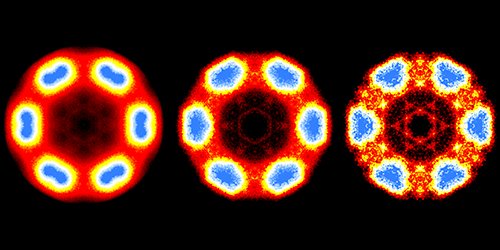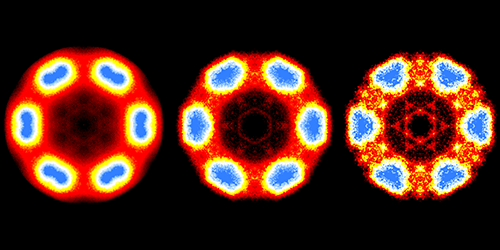Electron–Phonon Affair Comes to Light
The coupling of phonons (quanta of vibrational excitations) to electrons, holes, and other elementary electronic excitations underpins the properties of several materials, including molecular semiconductors. Pinpointing which vibrational excitations couple to which electronic excitations, and with what strength, would help researchers tailor such properties. But doing so in a given system remains challenging. Achim Schöll from the University of Würzburg, Germany, and co-workers have now shown that angle-resolved ultraviolet photoelectron spectroscopy can accomplish this in molecular materials.
Angle-resolved ultraviolet photoelectron spectroscopy measures the energy and momentum distribution of electrons knocked out of a material that is illuminated with ultraviolet light. Schöll and colleagues applied this technique to a single layer of molecules of superbenzene (seven fused benzene rings) on a gold substrate, collecting all electrons emitted from above the layer.
In a first step, the researchers measured the energy distribution of the photoelectrons and identified three peaks corresponding to electrons emitted during the ionization of the highest occupied molecular orbital: one prominent peak at 1.55 eV, and two smaller peaks at 1.75 eV and 1.95 eV that resembled vibrational excitations previously observed for similar molecules. They then mapped the momentum distribution of the electrons at these three energies, and found features in the maps that evolved from goggle-shaped at 1.55 eV to triangular at 1.75 eV and 1.95 eV. By comparing the maps to theoretical simulations, the authors attributed these changes to a distortion of the superbenzene molecules caused by one specific vibration that couples to the ionization and may be the root of some of the material’s electronic properties.
This research is published in Physical Review Letters.
–Ana Lopes





